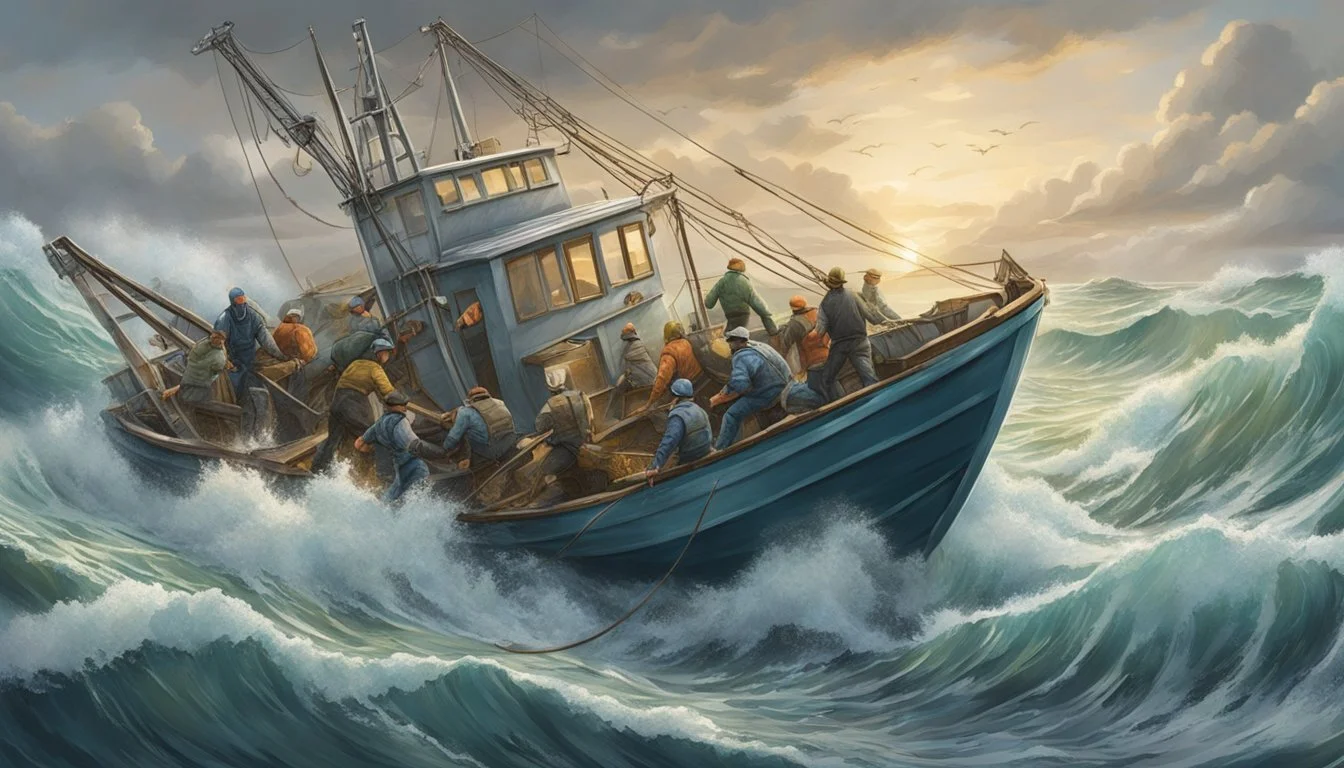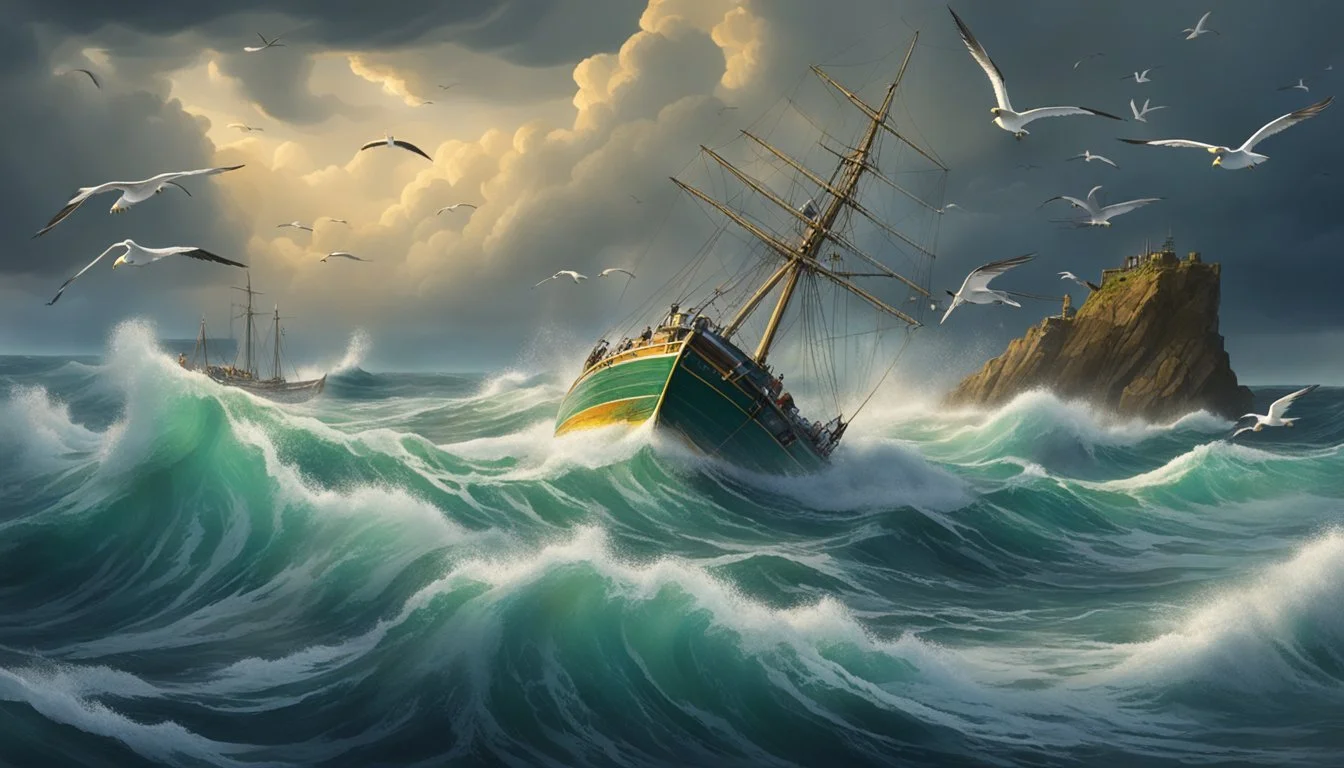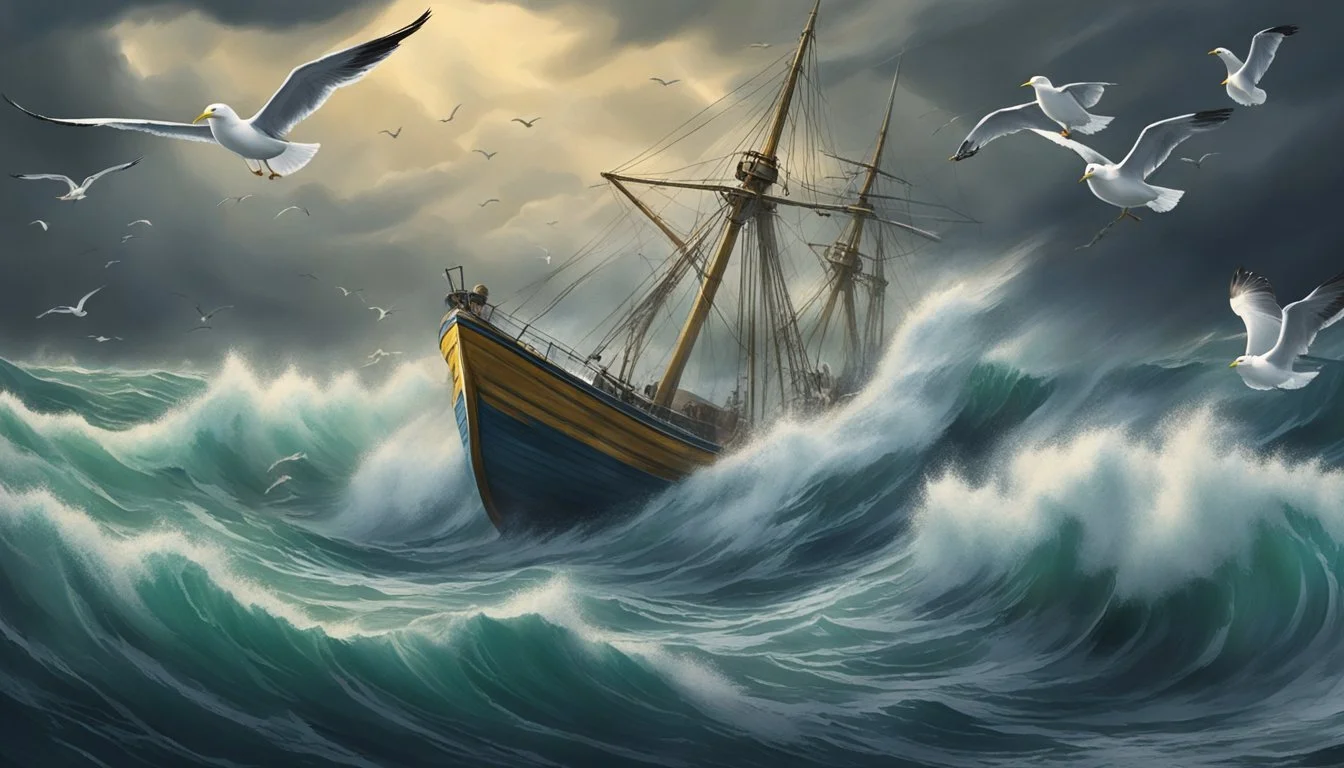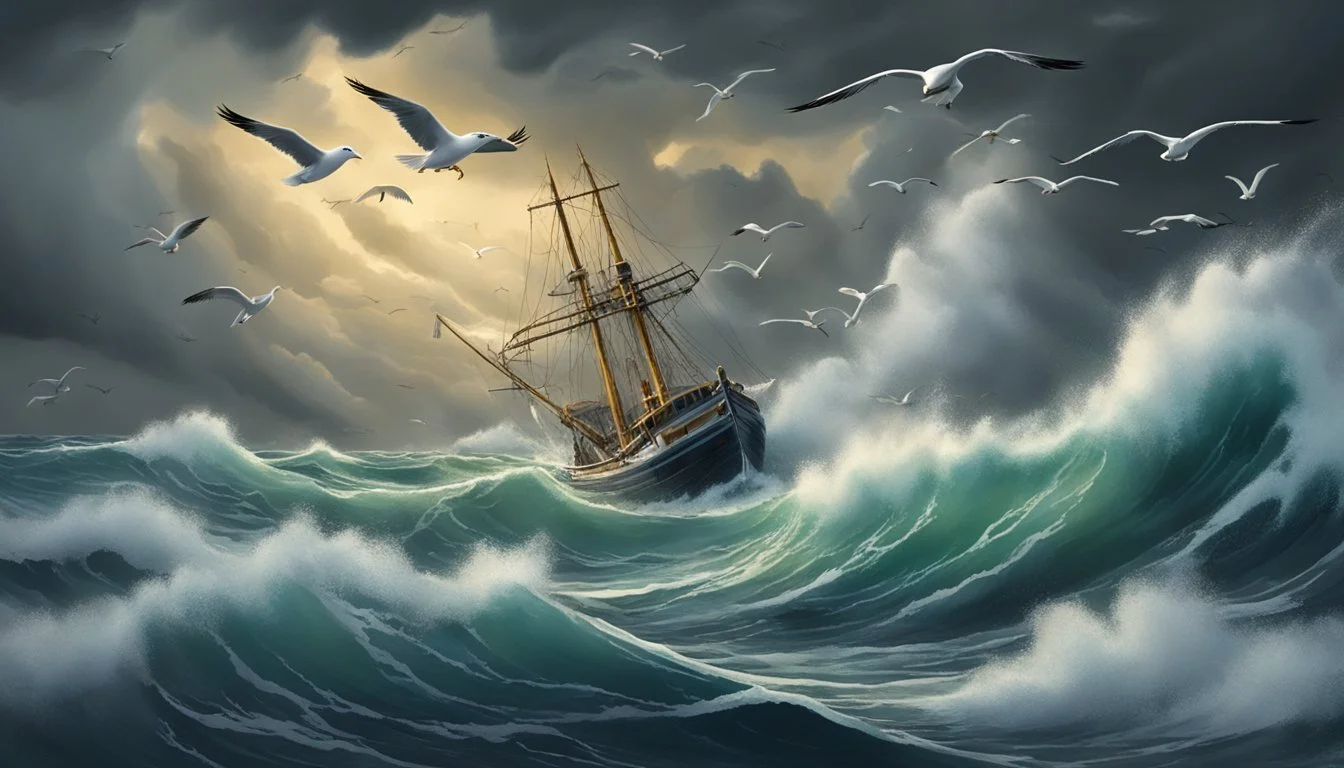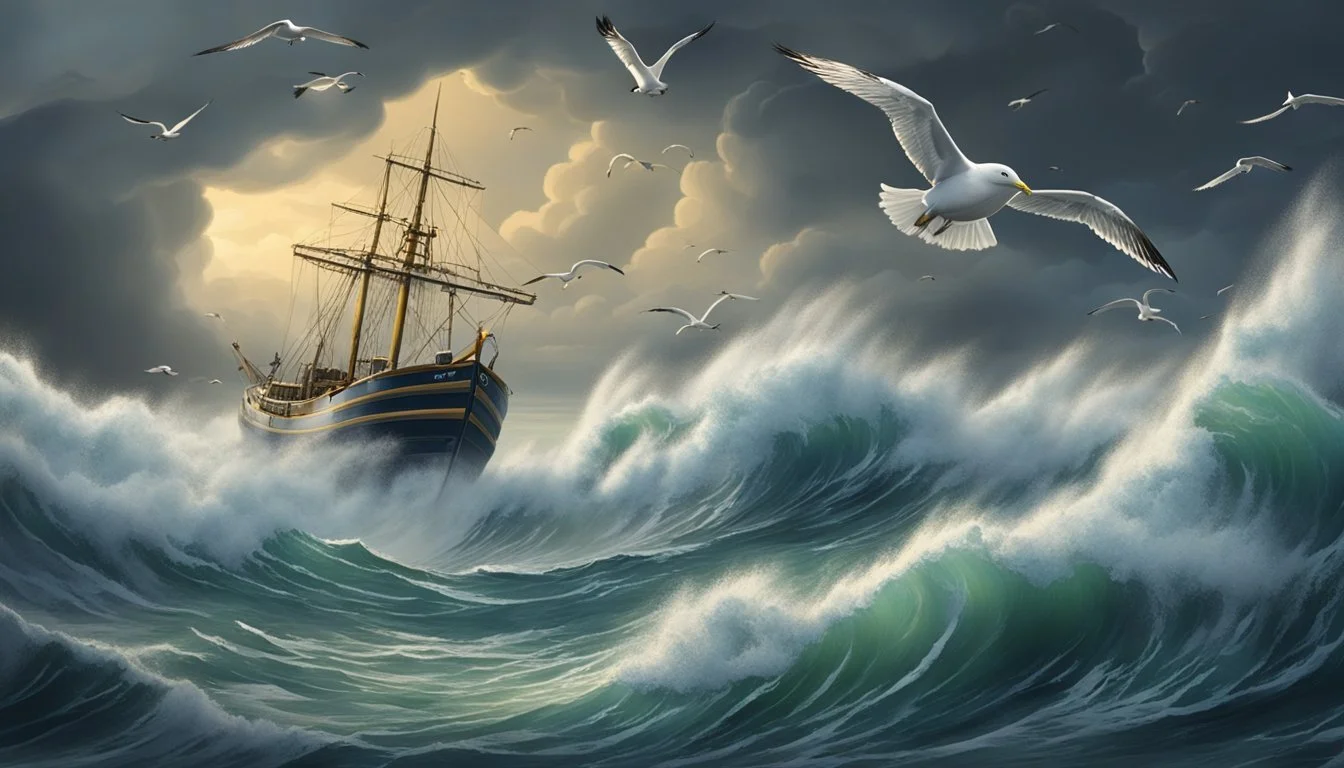Deadliest Catch's Impact on Public Perception of Commercial Fishing
Reality TV Shapes Industry Image
Deadliest Catch has captivated audiences worldwide since its debut in 2005, offering a raw and unfiltered look into the perilous world of commercial fishing. The Emmy-nominated series has brought the challenges faced by Alaskan crab fishermen in the Bering Sea into millions of homes, fundamentally altering public perceptions of this dangerous profession.
The show's dramatic portrayal of life at sea has raised awareness about the risks and sacrifices inherent in commercial fishing, an industry that claims thousands of lives globally each year. By humanizing the fishermen and their struggles, Deadliest Catch has fostered a deeper appreciation for the men and women who brave treacherous conditions to bring seafood to our tables.
Beyond entertainment, the series has had far-reaching impacts on marine conservation efforts. Its vivid depiction of the harsh realities of commercial fishing has sparked important conversations about sustainable fishing practices and the need for better safety measures in the industry. As viewers become more invested in the lives of the fishermen, they also gain a greater understanding of the delicate balance between human needs and environmental preservation.
The Show's Concept and Reach
"Deadliest Catch" revolutionized reality television by showcasing the perilous world of Alaskan crab fishing. The series captivated audiences with its raw portrayal of life at sea and the high-stakes nature of commercial fishing.
Origination of 'Deadliest Catch'
Discovery Channel launched "Deadliest Catch" in 2005, aiming to document the dangerous profession of crab fishing in the Bering Sea. The show's creators recognized the dramatic potential in the treacherous conditions and the fishermen's daily struggles.
The series quickly gained traction due to its unique premise and authentic depiction of maritime life. It offered viewers an unprecedented look into an industry rarely seen on television.
Popularity and Audience Engagement
"Deadliest Catch" became a cultural phenomenon, attracting millions of viewers worldwide. Its success led to multiple spin-offs, including "After the Catch" and "Deadliest Catch: Dungeon Cove."
The show's popularity stems from its ability to blend edge-of-your-seat action with personal stories of the crew members. This combination keeps audiences invested in both the fishing operations and the characters' lives.
Viewers engage with the show through social media, fan forums, and merchandise, creating a dedicated community around the series.
Roles and Impact of Key Cast Members
Captain Sig Hansen emerged as one of the show's most recognizable figures. His leadership style and family legacy in fishing resonated with audiences, making him a fan favorite.
Jake Anderson's journey from greenhorn to captain showcased the career progression possible in the industry. His personal struggles and triumphs added depth to the series.
These key cast members, along with others, have become ambassadors for commercial fishing. Their experiences educate viewers about the challenges and rewards of the profession.
The cast's visibility has also raised awareness about fishing safety and conservation issues, influencing public perception of the industry.
Commercial Fishing Spotlight
"Deadliest Catch" has brought the realities of Alaskan crab fishing to the forefront of public consciousness. The show has shed light on the industry's practices, economic significance, and the daily lives of fishing crews.
Alaskan Crab Fishing Practices
Crab fishing in Alaska's Bering Sea is a high-stakes endeavor. Vessels like the F/V Northwestern and F/V Time Bandit brave treacherous waters and harsh weather conditions to harvest king and snow crab. The fishing season is intense and short, typically lasting only a few weeks.
Crews use large metal pots baited with fish to catch the crabs. These pots are dropped to the ocean floor and retrieved after several hours. The work is physically demanding and requires 24/7 operations.
Safety measures are crucial due to the dangerous nature of the job. Crews wear survival suits and participate in regular safety drills. Recent regulations have improved working conditions and sustainability practices in the crab fishery.
Economic Impact on the Fishing Industry
The Alaskan crab fishery is a significant contributor to the state's economy. Annual harvests can exceed 100 million pounds, generating substantial revenue for fishing companies and local communities.
The industry provides employment for thousands of workers, including fishermen, processors, and support staff. Crab fishing wages are often high due to the hazardous nature of the work and the short season.
Market demand for Alaskan crab fluctuates, affecting prices and quotas. International competition and changing regulations can impact the industry's profitability. "Deadliest Catch" has increased consumer awareness of the product, potentially influencing market trends.
Portrayal of the Fishing Crews' Experiences
"Deadliest Catch" offers viewers an intimate look at life aboard crab fishing vessels. The show highlights the camaraderie and conflicts among crew members as they work long hours in challenging conditions.
Fishing crews face physical and mental challenges daily. They endure sleep deprivation, extreme weather, and the constant risk of injury or death. The show portrays the stress of meeting quotas and dealing with mechanical failures at sea.
The series also showcases the personal lives of fishermen, including their families and off-season activities. This humanizes the crews and provides context for their career choices. Viewers gain insight into the sacrifices and rewards of this demanding profession.
Conservation and Sustainability
"Deadliest Catch" has illuminated key conservation issues in commercial fishing. The show depicts the complex interplay between regulations, sustainable practices, and environmental impacts in the crab fishing industry.
Environmental Regulations and Their Representation
"Deadliest Catch" portrays fishermen navigating strict environmental regulations. Quota systems limit catch amounts to prevent overfishing. The show depicts captains meticulously tracking their hauls to stay within legal limits.
Cameras capture discussions about changing regulations and their effects on fishing operations. Viewers see firsthand how policies aimed at protecting crab populations impact the livelihoods of fishermen.
The series also highlights enforcement efforts. Coast Guard inspections and potential fines for violations are recurring elements, underscoring the seriousness of conservation measures.
Sustainable Fishing Practices Showcased
The program features sustainable fishing techniques adopted by crab boats. Many vessels use escape rings in their pots, allowing undersized crabs to exit. This practice helps maintain healthy crab populations for future seasons.
Captains are often shown carefully sorting their catch. They return female and juvenile crabs to the water, preserving breeding stock. The show emphasizes the long-term benefits of these practices for the industry's sustainability.
"Deadliest Catch" also depicts evolving fishing technology. Newer, more selective gear helps reduce environmental impact while improving efficiency.
The Reality of Bycatch and Ecosystem Impact
Bycatch - the unintended capture of non-target species - is a significant issue highlighted in the series. Viewers witness crews dealing with accidental catches of fish, birds, and other marine life in crab pots.
The show doesn't shy away from showing the consequences of fishing on marine ecosystems. Damaged sea floors from dragging pots and the impact on food chains are occasionally addressed.
"Deadliest Catch" also explores efforts to mitigate these effects. Some episodes feature collaborative research between fishermen and scientists to develop more eco-friendly fishing methods.
Challenges and Risks
Commercial fishing in the Bering Sea presents numerous dangers and obstacles for crews. The harsh environment, physical demands, and economic pressures create a uniquely challenging occupation.
Navigating Dangerous Waters
The Bering Sea is notorious for its treacherous conditions. Massive waves, icy temperatures, and fierce storms pose constant threats to vessels and crew members. Visibility is often poor, increasing the risk of collisions or running aground.
Ice formation on ships can destabilize them, while floating ice chunks may damage hulls. Crews must remain vigilant and skilled in navigating these perilous waters. The U.S. Coast Guard maintains a presence in the area but response times can be lengthy due to the vast, remote expanse.
Health and Safety on the Vessels
Long work hours in cramped, wet conditions take a toll on fishermen's bodies. Common health issues include:
Hypothermia
Frostbite
Repetitive strain injuries
Sleep deprivation
Safety measures like life jackets and survival suits are crucial. Strict safety regulations aim to reduce accidents, but enforcement can be challenging at sea.
Crews face risks from heavy machinery, swinging crab pots, and slippery decks. Falls overboard in frigid waters can be fatal within minutes. Mental health is also a concern, with isolation and stress affecting many fishermen.
Economic Challenges and Market Pressures
Fishing quotas and catch limits help prevent overfishing but can impact profits. Crews may feel pressure to maximize their hauls within these constraints. Market prices for crab fluctuate, adding financial uncertainty.
Vessel maintenance and fuel costs are significant expenses. Bad weather or poor catches can result in financial losses for an entire season. Some fishermen take on debt to stay afloat during lean times.
Competition is fierce, driving crews to push their limits. This economic pressure can lead to risk-taking behavior, potentially compromising safety. Balancing profitability with sustainable fishing practices remains an ongoing challenge for the industry.
Personal Stories and Societal Themes
"Deadliest Catch" offers a window into the complex lives of commercial fishermen, revealing personal struggles, family dynamics, and broader societal issues. The show's raw portrayal of these elements has significantly impacted public perception of the fishing industry.
Family Dynamics Within the Fishing Community
The series showcases the intricate relationships within fishing families. Captain Phil Harris's bond with his sons Josh and Jake exemplifies the generational nature of the profession. Their story highlights the challenges of balancing family life with the demands of a dangerous career.
Fishing captains often grapple with the responsibility of keeping crew members safe while meeting quotas. This pressure can strain relationships both at sea and at home. The show depicts how families cope with long absences and the constant worry for their loved ones' safety.
Women in the industry, like Linda Greenlaw, have also gained recognition through the series. Their roles challenge traditional gender norms in fishing communities.
Mental Health Considerations
"Deadliest Catch" has brought attention to the mental health challenges faced by fishermen. The isolation at sea, extreme working conditions, and financial pressures can take a toll on crew members' well-being.
Nick Mavar's struggle with anxiety and panic attacks while at sea highlighted the importance of mental health support in the industry. The show has prompted discussions about providing better resources for fishermen dealing with stress, depression, and substance abuse.
The loss of fellow crew members and the constant threat of danger contribute to psychological strain. The series has shown how fishermen cope with grief and trauma, often without adequate support systems.
Legal and Sociopolitical Issues Faced
The show has shed light on various legal and sociopolitical challenges within the fishing industry. Civil lawsuits related to workplace safety and labor disputes have been featured, raising awareness about the legal complexities of commercial fishing.
Environmental regulations and fishing quotas are frequently discussed, illustrating the delicate balance between conservation efforts and economic sustainability. The series has shown how policy changes can dramatically impact fishermen's livelihoods.
Health crises like Captain Phil Harris's battle with a cancerous tumor and the industry's response to COVID-19 have been documented. These events have highlighted the vulnerabilities of remote fishing communities and the need for improved healthcare access.
Cultural and Historical Context
"Deadliest Catch" has shed light on the rich traditions and cultural significance of commercial fishing in Alaska. The show has influenced popular culture and media portrayals of the fishing industry.
Integration of Fishing Traditions and Narratives
Alaskan crab fishing, prominently featured in "Deadliest Catch," has deep roots in the state's history. The show highlights multi-generational fishing families, showcasing how knowledge and skills are passed down. Fishing traditions in Dutch Harbor, a key location in the series, date back centuries.
The series captures the unique language and customs of crab fishermen. It portrays rituals like the "blessing of the fleet" and superstitions that have long been part of maritime culture. These elements provide viewers with insights into the tight-knit fishing communities.
Influence on Popular Culture and Media
"Deadliest Catch" has significantly impacted popular culture's perception of commercial fishing. The show's success has spawned numerous spin-offs and documentaries about dangerous professions. It has inspired books, video games, and even theme park attractions.
The series has influenced how other media portray fishing communities. Films and TV shows now often depict more realistic representations of life at sea. The rugged aesthetic of Alaskan crab fishing has inspired fashion trends and advertising campaigns.
"Deadliest Catch" has also drawn comparisons to other fishing cultures, like those in Maine. This has broadened public understanding of regional differences in commercial fishing practices across the United States.
Evolution of 'Deadliest Catch'
'Deadliest Catch' has transformed over the years, adapting to new technologies and expanding its reach. The show has embraced modern filming techniques and spawned several spin-offs, solidifying its place in reality television history.
Advancements in Technology and Filming Techniques
'Deadliest Catch' has leveraged cutting-edge technology to enhance its storytelling. High-definition cameras and drones now capture breathtaking aerial shots of the Bering Sea. Underwater cameras provide viewers with a unique perspective of the ocean floor.
Improved satellite communications allow for real-time updates from the boats. This technology enables producers to stay connected with the crews and respond quickly to emerging storylines.
The show's editing techniques have also evolved. Fast-paced cuts and dramatic sound design create a more immersive viewing experience. These advancements have helped maintain the series' popularity through Season 19 and beyond.
Legacy and Spin-Offs
'Deadliest Catch' has inspired several spin-off series. 'Deadliest Catch: Dungeon Cove' focuses on crabbing along the Oregon Coast. 'Deadliest Catch: Bloodline' follows Captain Josh Harris as he explores his late father's legacy in Hawaii.
The show's success has led to international versions. 'Deadliest Catch: Greenland' and 'Deadliest Catch: Australia' showcase dangerous fishing practices in other parts of the world.
Original Productions Inc. and Trifecta Solutions LLC have played crucial roles in expanding the franchise. These production companies have maintained the show's high standards while exploring new storytelling opportunities.
Future Outlook
The future of commercial fishing and its public perception will be shaped by evolving industry practices and ongoing media coverage. Changing environmental conditions and technological advancements will play key roles in the coming years.
Predictions for the Crab Fishing Industry
Climate change and shifting ocean temperatures will likely impact crab populations and migration patterns. This may lead to changes in fishing seasons and quotas. Fishing operations will need to adapt to these new realities.
Technological innovations could enhance safety measures aboard vessels. Improved weather forecasting and communication systems may reduce risks for crews.
Sustainability practices will become increasingly important. Fisheries may implement stricter catch limits and more selective fishing methods to preserve crab stocks for future generations.
Economic factors, including market demand and fuel costs, will continue to influence the industry's profitability. Diversification into other seafood markets may become necessary for some operators.
Role of Media in Shaping Future Perception
Television shows like "Deadliest Catch" will likely maintain their influence on public understanding of commercial fishing. These programs may evolve to highlight conservation efforts and sustainable practices within the industry.
Social media platforms will provide direct channels for fishers and industry representatives to share their perspectives. This could lead to more nuanced public views of fishing operations.
Increased focus on ocean health in news media may draw attention to the environmental impacts of commercial fishing. Industry responses to these concerns will be crucial in shaping public opinion.
Educational content about responsible fishing practices may become more prevalent. This could foster greater public support for sustainable commercial fishing operations.

